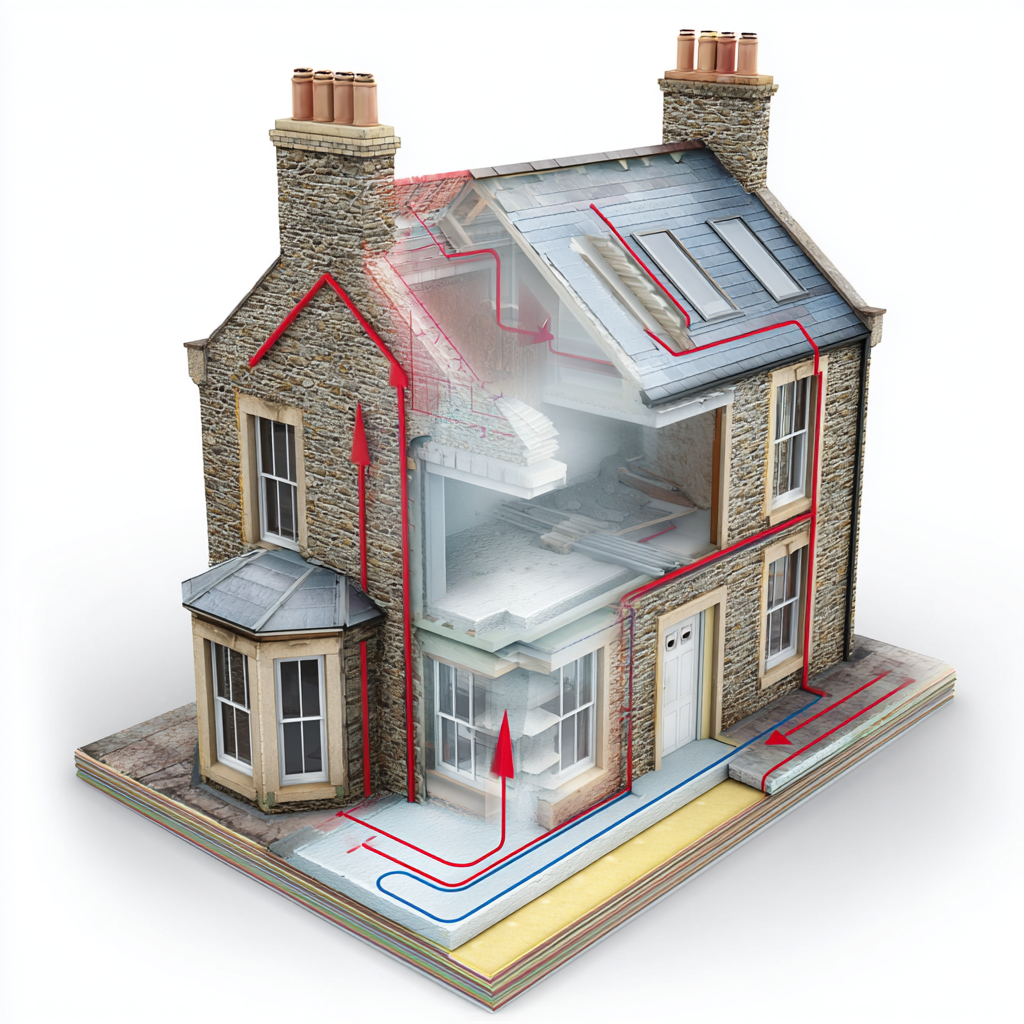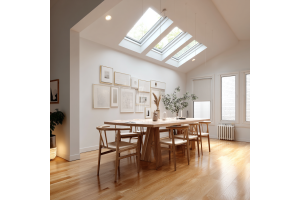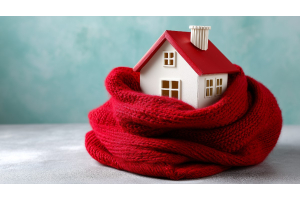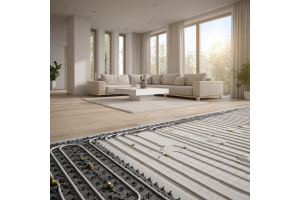
As sustainability goals tighten and energy costs rise, two trends are shaping the future of home heating: geothermal heating (especially ground source heat systems and enhanced geothermal) and the broader movement toward zero-carbon homes. At Geyser, where we specialise in efficient, designer radiators and heating solutions, understanding these trends is essential for delivering products and guidance that align with what the future demands.
What Is a Zero-Carbon Home?
Before diving in, it’s important to clarify what “zero-carbon home” (or “net-zero home”) means in practice, and especially in the UK context.
-
A zero-carbon home is typically one that, over the course of a year, emits no net carbon dioxide (CO₂) from its operations: heating, lighting, hot water, ventilation, etc. That means energy consumption is minimised, and any remaining energy demand is supplied from renewable or carbon-free sources.
-
There are debates about whether “embodied carbon” (carbon from construction materials, manufacturing, transport) and unregulated energy use (appliances, plug loads) should be included. Some definitions do, some don’t. More
-
UK policy has gone through phases: the old Code for Sustainable Homes had a Level 6 “zero carbon” standard, but many of those regulations or planned requirements were changed or scaled back.
So, zero-carbon means different things depending on the scope: new build vs retrofit, fixed appliances, regulated vs unregulated energy, and whether renewable energy is on-site or off-site.
Geothermal Heating: What & Why
“Geothermal heating” in domestic or neighbourhood contexts mostly refers to ground source heat pumps (GSHPs) — systems that extract stable heat from underground (soil or water) using buried loops, boreholes, or other ground coupling. There is also interest in enhanced geothermal systems (EGS) which can reach deeper, hotter ground, sometimes for larger scale heat or electricity.
Key Types
-
Horizontal loops: trenches dug in the ground, pipes laid at shallow depth. Less disruption if lot of land, but needs space. The Eco Experts
-
Vertical boreholes: deeper holes drilled; less land required, more costly. GreenMatch.co.uk
-
Hybrid systems: sometimes GSHP combined with solar, battery storage, or even air source heat pump backup.
Benefits
-
Very stable (ground temperatures vary much less than air), so high efficiency even in winter. Homebuilding
-
Low running costs after installation, since you're using mostly latent heat from the earth. The Eco Experts
-
Contributes strongly to carbon reduction targets, especially when paired with renewables/electricity from green sources.
Challenges and Barriers
-
High upfront cost: The groundworks + installation for GSHPs can be expensive. Typical UK costs range from ~£16,000 up to ~£49,000 depending on house size, type, land availability, horizontal vs vertical loop, output needed.
-
Payback periods are long: depends on energy prices, efficiency, insulation, and whether grants apply. For some homes, more than 20 years.
-
Land or planning constraints: not every property has sufficient land for horizontal loops or permission for deep boreholes. Ground geology matters.
-
Need for supporting infrastructure: heat distribution inside the home (radiators or underfloor heating), hot water configurations, controls. Sometimes existing radiators aren’t adequate (too small, not low-temperature friendly).
Zero-Carbon Homes: Trends, Policy & Market Drivers
What is pushing zero-carbon homes forward (or holding them back), especially in the UK / Europe?
Drivers
-
Regulation: Future Homes Standard in the UK is pushing for new build homes to meet much higher efficiency and low-carbon heating standards. Also, building regulations around Part L (energy efficiency), Part O, Part F (ventilation) etc.
-
Grant schemes & incentives: The Boiler Upgrade Scheme gives grants (up to ~£7,500) for installing heat pumps (air or ground source). These help but don’t always cover the full cost. GSHP often has larger upfront ℅ of the cost.
-
Energy price pressure & carbon taxes: As fossil energy becomes more expensive, low-carbon options become more economically attractive.
-
Consumer awareness & market demand: More homeowners want greener homes, lower bills, reduced carbon footprint. New developments tout net-zero credentials as selling points.
Trends & Innovations
-
Passive house / very low energy design more widely adopted: better insulation, airtightness, thermal bridges minimised, smart ventilation, high quality glazing.
-
Hybrid renewables: pairing heat pumps (ground/air) with solar PV, battery storage, heat batteries (emerging technologies).
-
Enhanced geothermal systems (EGS) at scale: more research into drilling deeper, improving the efficiency and lowering costs. May be more relevant for district heating, larger developments.
-
Electrification of heating: moving away from gas/oil toward electric heating or heat pumps. Preference for systems that work well with lower flow temperatures, underfloor heating, etc.
Geothermal & Zero-Carbon: How They Fit Together
Geothermal heating (GSHP / EGS) is a major tool in achieving zero-carbon or net-zero homes, especially for the heating/hot water portion of emissions. Here’s how they intersect and what to plan for:
| Aspect | Geothermal’s Role | Implications for Home Heating Design (Relevant for Geyser & Radiators, etc.) |
|---|---|---|
| Operational Carbon | Reduces or eliminates fossil fuel use for heating, which is a large share of home emissions. | Radiators and heating emitters must be compatible with lower flow/return temperatures. Standard radiators may need to be larger or vertical/slimline to accommodate lower temperature output. Underfloor heating may be preferred in some cases. |
| Energy Efficiency & Fabric | Homes must be well insulated, airtight, reduce thermal bridges, use high performance glazing, etc. | Better insulation means radiators can be smaller or fewer; heat loss is reduced. Radiator output specs must consider improved envelope. |
| Integration with Renewables | Geothermal + solar / PV + battery storage setups create synergies. Surplus electricity can help run pumps or other systems. | Controls become more important: thermostats, smart control, scheduling, possibly integrating with PV generation (e.g. to run heat pump when solar generation is high). Radiators must respond well to variable heat input. |
| Cost & Financing | Zero-carbon homes with geothermal are expensive upfront but may qualify for grants, incentives, or premium sale value. | Design choices like radiator types, heat emitter efficiency, ducting, fit of underfloor heating vs radiators, affect cost. Products like slim, designer radiators can add both aesthetic appeal and fit well in efficient homes. |
| Scalability & Retrofit | Useful both in new builds and retrofits (where land/ground conditions allow). For retrofit, challenges include bringing insulation up to standard. | For existing homes, need to assess whether existing radiators and plumbing can handle a low-temperature heat pump or GSHP; sometimes radiators need upgrading. Also need enough physical space and structural support for radiators, piping, ground loops. |
UK Status: How Far Along Are We?
Here are some key figures and status indicators in the UK that show where geothermal and zero-carbon homes stand:
-
There are estimated 30,000–38,000 ground source heat pumps installed in UK homes currently. Not huge growth yet compared to what is needed. nesta
-
The cost of GSHP installations (including ground loop, equipment, and installation) often falls between £16,000-£49,000, depending on property size, loop type, and land/groundwork. After government grants (e.g. Boiler Upgrade Scheme) the net cost is lower.
-
Running costs are generally lower than fossil fuel alternatives once installed, provided the home is well insulated and the system is sized correctly. Efficiency (COPs) for ground source pumps can be high (often 3-4×), meaning 3-4 units of heat for each unit of electricity used.
-
Policy changes like the Future Homes Standard and tightening of building regulations are pushing for new homes to be built to much higher energy efficiency and low-carbon heating standards. Gas boilers are increasingly being phased out in new builds.
What Homeowners / Builders Should Consider: Practical Guidance
If you’re thinking ahead to future-proof your home (or product offering) with geothermal heating or aiming for zero-carbon standards, here are detailed considerations:
-
Site & Ground Conditions Assessment
-
Do soil tests and geological assessments to see if ground loops or boreholes are feasible.
-
Evaluate space for horizontal loops or borehole rigs. Land availability, access, planning permissions are major factors.
-
-
Insulation & Fabric First
-
Before installing GSHP or other geothermal solutions, ensure the house has excellent insulation: roof, walls, floor, windows. Make the home as airtight as possible.
-
Minimise thermal bridges.
-
-
Heat Emitter Compatibility
-
Radiators must be designed for lower flow temperatures. This may mean: larger surface area radiators; vertical or slimline styles; underfloor heating where floor build-up is feasible.
-
Designer radiators can offer both the aesthetic appeal and the performance needed — Geyser’s vertical / high-output radiators are well placed for future low-temperature systems.
-
-
System Design & Controls
-
Use smart controls, zoning, thermostatic radiator valves (TRVs), possibly integrating with PV or other renewables.
-
Degree of automation, weather compensation, and dynamic control improves both comfort and efficiency.
-
-
Financial Planning & Grants
-
See what subsidies or grant schemes are available locally (e.g. Boiler Upgrade Scheme). Factor them into your return-on-investment calculations.
-
Consider whole-house cost, including not just the pump, but groundworks, radiators or underfloor heating, controls, possible upgrades to electrical system.
-
-
Long-Term Maintenance & Lifecycle
-
GSHP systems tend to have long lifespans for ground loops and durable heat pumps, but maintenance matters. Proper installation reduces issues.
-
Consider resilience: what happens if electricity supply is disrupted, or cost fluctuates; whether system can integrate backup or hybrid.
-
-
Regulation & Certification
-
Ensure compliance with building regulations (UK), especially energy efficiency, heating, insulation.
-
Use certified installers. For example, installers accredited under government or industry schemes.
-
Looking Ahead: What’s Next in Geothermal & Zero-Carbon Home Trends
Here are some of the emerging and future trends likely to influence how geothermal heating and zero-carbon homes evolve:
-
Enhanced Geothermal Systems (EGS) at larger scale: deeper drilling, better heat extraction, possibly for district heating in suitable regions.
-
Integration with energy storage: combining geothermal heating with batteries, thermal storage, smart grid applications.
-
Lower cost drilling and loop installation technologies, making GSHPs more affordable and accessible.
-
Innovations in heat pump technology: better COPs, quieter units, more compact designs, better integration with homes' thermal mass.
-
Policy push & regulation: stricter building standards; possibly mandates for new builds to have zero-carbon heating; financial incentives; phasing out of fossil fuel heating.
-
Embodied carbon consideration: more emphasis not just on operational carbon but the carbon footprint in materials, manufacturing, transport.
What This Means for Geyser: Radiators, Product Design & Advice
For Geyser, geothermal heating and zero-carbon homes present both opportunity and challenge. Here’s how Geyser can align its products and messaging with these trends:
-
Develop radiators optimized for low-temperature systems, with high thermal output at lower water temperatures. Vertical/slimline/high surface area radiators help.
-
Offer products and accessory systems (valves, controls) that work well with heat pumps and hybrid systems.
-
Provide guidance on radiator sizing in zero or low carbon homes: more precise output charts, better pairing radiators with thermal fabric of the building.
-
Marketing and education: help homeowners understand lifetime cost savings, environmental benefits, trade-offs.
-
Emphasize stylish design options, because zero-carbon does not have to mean bland — designer radiators can be architectural features, not just functional.
-
Consider offering radiator systems that integrate with smart heating controls and possibly solar or other renewables.
Conclusion
The future of home heating is moving rapidly: zero-carbon homes are no longer a distant ideal but a near-term benchmark, pushed by regulation, consumer demand, and rising energy prices. Geothermal heating (especially ground source heat pumps and enhanced geothermal) offers one of the most promising paths to achieving low-carbon, highly efficient, comfortable heating — especially when combined with excellent home insulation, smart controls, and energy generation.
For homeowners, retrofitters, architects and manufacturers like Geyser, the key is to anticipate this transition: design products that are low-temperature friendly, promote thermal efficiency, and help homeowners understand the total cost of ownership. The more homes built or upgraded to these higher standards, the faster we move toward a sustainable housing future — where warmth, comfort, and style go hand in hand with zero carbon emissions.







